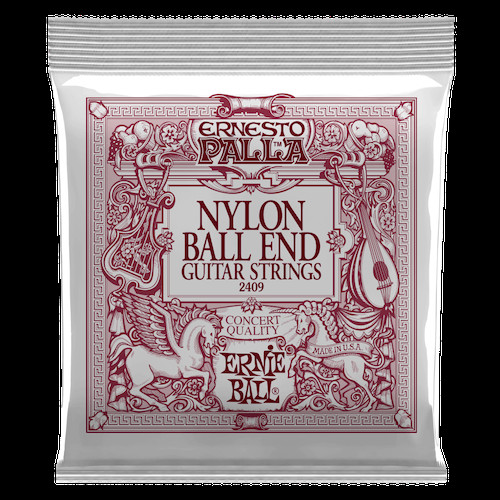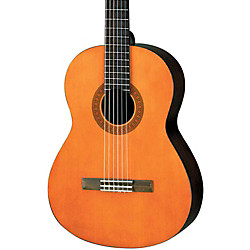For those embarking on their guitar journey, the initial choice between a classical and an acoustic guitar can be surprisingly perplexing. Many beginners mistakenly use “acoustic” and “classical” interchangeably, unaware that these terms denote fundamentally different instruments. While both belong to the acoustic guitar family, significant variations in their design and construction cater to distinct playing styles and sonic preferences. Understanding the Difference Between Classical And Acoustic Guitar is crucial for selecting the right instrument to match your musical aspirations. Let’s explore the key distinctions that set these two guitar types apart.
Body Shape and Construction
One of the immediately noticeable differences between classical and acoustic guitars lies in their body shape. Classical guitars typically exhibit a slightly smaller body compared to their acoustic counterparts. Beyond size, subtle variations in body contours exist, although discerning these nuances might require a trained eye. However, a more readily identifiable construction difference is the presence of a scratch plate, or pickguard. Acoustic guitars almost invariably feature this plastic piece adjacent to the soundhole, designed to protect the guitar’s body from pick scratches during strumming. Classical guitars, traditionally played with fingers, generally lack this feature. Therefore, when trying to differentiate between the two, the presence of a scratch plate is a strong visual cue for an acoustic guitar.
Furthermore, the fretboard, or fingerboard, presents another point of divergence. Acoustic guitars boast a noticeably narrower fretboard compared to classical guitars. Additionally, classical guitar fretboards typically lack fret markers, the inlaid dots that guide finger placement on acoustic guitars. The headstock, the part of the guitar that holds the tuning pegs, also exhibits a distinct design difference between the two types.
 Acoustic guitar body with a visible scratch plate
Acoustic guitar body with a visible scratch plate
Strings: Nylon Versus Steel
Perhaps the most critical difference between classical and acoustic guitars lies in the type of strings they utilize. Classical guitars are exclusively strung with nylon strings. These strings are thicker, softer to the touch, and produce a warmer, mellower tone compared to steel strings. Conversely, acoustic guitars are designed for steel strings, which are thinner, create a brighter, louder sound, and are essential for the instrument’s characteristic projection and resonance. Attempting to interchange string types can lead to detrimental results. Nylon strings on an acoustic guitar will produce a weak, thin sound due to insufficient tension. Conversely, fitting steel strings onto a classical guitar can exert excessive tension on the instrument’s neck and bridge, potentially causing warping, structural damage, and ultimately, permanent harm. To ensure optimal sound and prevent damage, always use the string type specifically recommended for your guitar.
 Close-up of nylon strings on a classical guitar headstock
Close-up of nylon strings on a classical guitar headstock
The Truss Rod: Neck Reinforcement
Another internal difference, though not visually apparent from the outside, is the presence of a truss rod. A truss rod is a metal rod embedded within the neck of a guitar, designed to counteract the immense tension exerted by steel strings. Acoustic guitars, due to their use of steel strings, are equipped with truss rods to ensure neck stability and prevent bowing under string tension. Classical guitars, designed for the lower tension of nylon strings, do not require a truss rod. Visually identifying a truss rod access point is sometimes possible on acoustic guitars. By looking at the headstock, near the nut (where the strings meet the headstock), you might spot a small bolt or an access hole, often covered by a plastic plate. This indicates the presence of an adjustable truss rod.
Playing Experience and Musical Styles
The differences in construction and strings translate to distinct playing experiences and suitability for various musical genres. Acoustic guitars, with their narrower necks and steel strings, are often favored for genres like folk, pop, rock, and country. The steel strings contribute to a brighter, louder sound that projects well and is suitable for strumming and flatpicking techniques. The narrower neck can also be perceived as easier for some players, particularly those with smaller hands, and facilitates faster chord changes and lead playing.
Classical guitars, with their wider necks and nylon strings, are traditionally associated with classical music, flamenco, and fingerstyle guitar. The wider neck provides more space between strings, which is beneficial for intricate fingerpicking patterns. Nylon strings are gentler on the fingertips, making them potentially more comfortable for beginners during initial practice sessions. The resulting tone is warmer, mellower, and more nuanced, lending itself well to delicate melodies and complex harmonies.
 Yamaha C40 Classical Guitar showcasing its body and strings
Yamaha C40 Classical Guitar showcasing its body and strings
Choosing Between Classical and Acoustic
Ultimately, deciding between a classical and an acoustic guitar is a matter of personal preference and musical goals. There is no inherently “better” choice; each type excels in its own domain. If budget is a primary concern, classical guitars are often, but not always, more affordable at the entry-level. If your musical interests lean towards classical, flamenco, or fingerstyle guitar, the classical guitar is the clear choice. If you envision yourself playing folk, pop, rock, or country music, an acoustic guitar is generally more suitable. Consider also the physical aspects: nylon strings are easier on the fingers initially, while the narrower neck of an acoustic might feel more comfortable for some. The most important factor is to choose the guitar that inspires you to play and practice. Exploring both types, if possible, and even trying them out in person can be incredibly helpful in making an informed decision.
Conclusion
The difference between classical and acoustic guitar extends beyond mere terminology. They are distinct instruments with unique construction features, string types, tonal characteristics, and playing experiences. Understanding these key differences empowers aspiring guitarists to make the right choice for their musical journey. Whether you are drawn to the warm tones of nylon strings or the bright resonance of steel strings, both classical and acoustic guitars offer rewarding paths into the world of music. The ideal guitar is the one that resonates with you personally and fuels your passion for playing.

